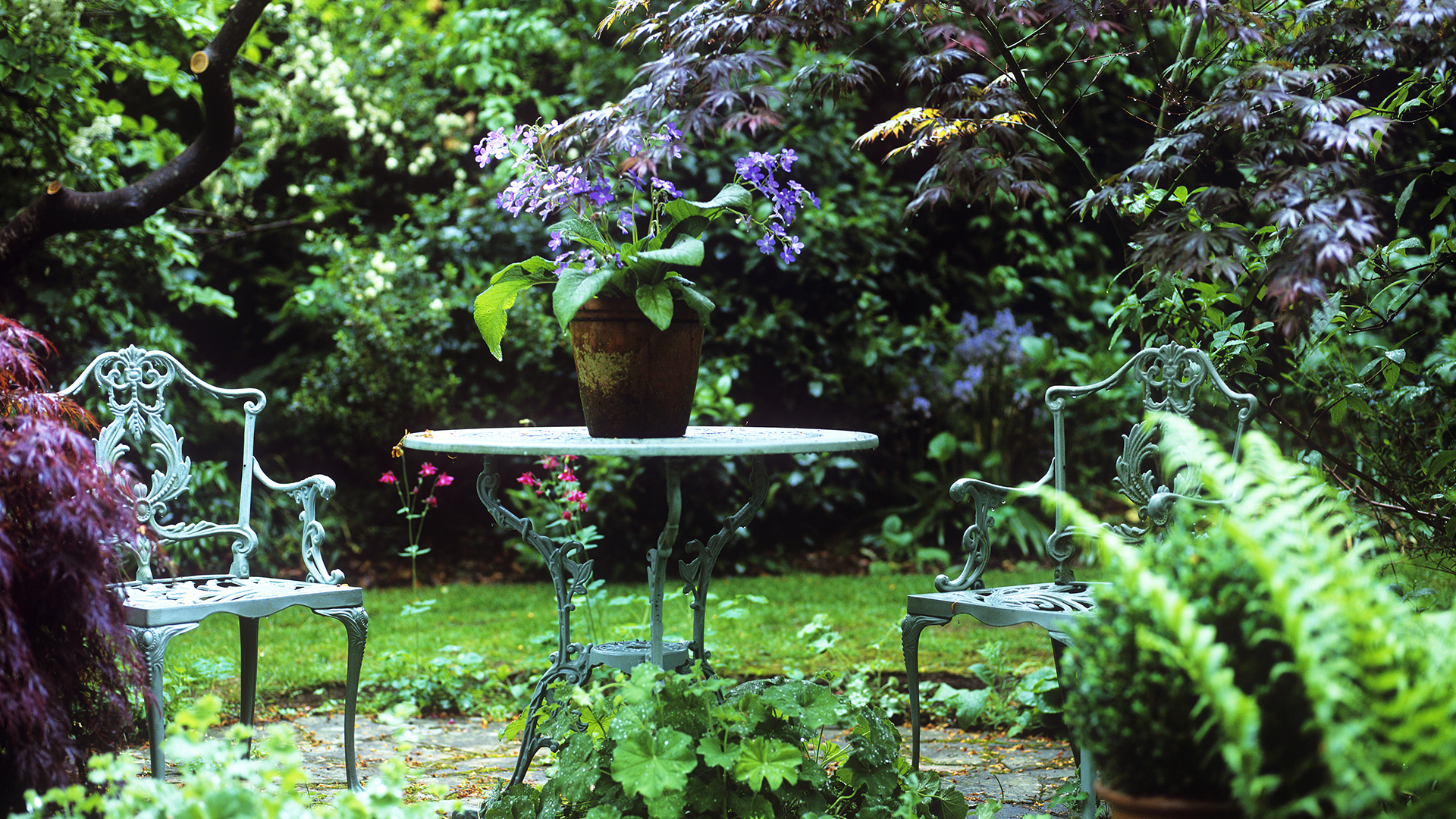
Shade gardens present challenges, but they are actually a beautiful opportunity to work with those low light levels to create a stunning outdoor space.
Shady borders can be the most delightful areas of a garden, providing cool contrasts to sunlit plots. After all, shade is an inevitable part of gardening. In fact, they can be a brilliant place to place your garden furniture too.
Whether the previous homeowners planted many mature trees as a means of creating privacy, you have a North-facing garden, or you are looking to brighten up an East-facing wall, rather than thinking of shady spots as lifeless voids, know that there is hope for a shaded garden.
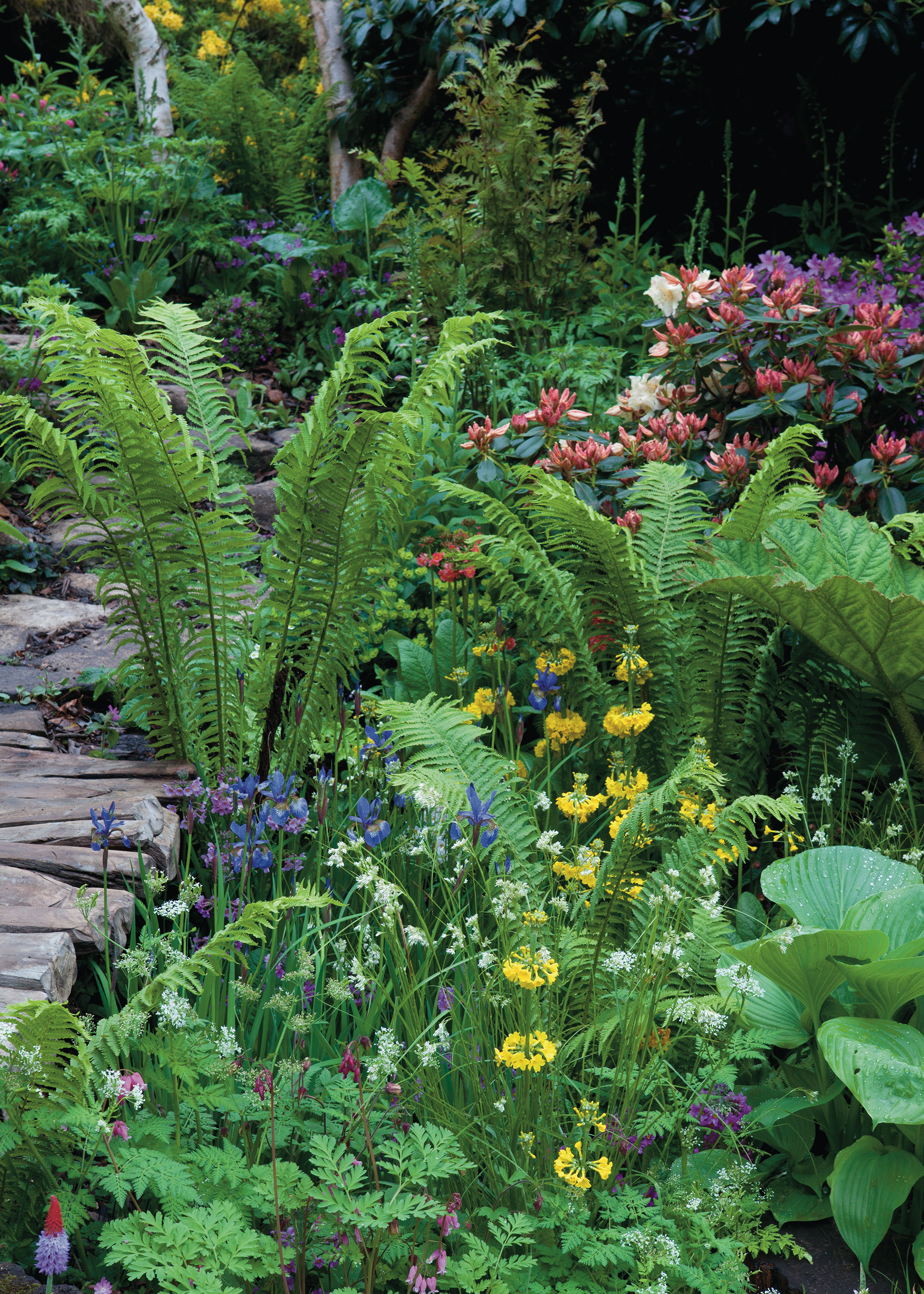
This area of a shade garden is resplendent in layers of greens with interesting mixes of foliage and form, bordering a meandering path
Use our advice and ideas to embrace dappled light, moderate, or even full shade spots. And, find more gardening inspiration and advice in our dedicated garden ideas page.
Shade gardens – 15 tips for creating yours
1. Assess the areas of shade in your garden
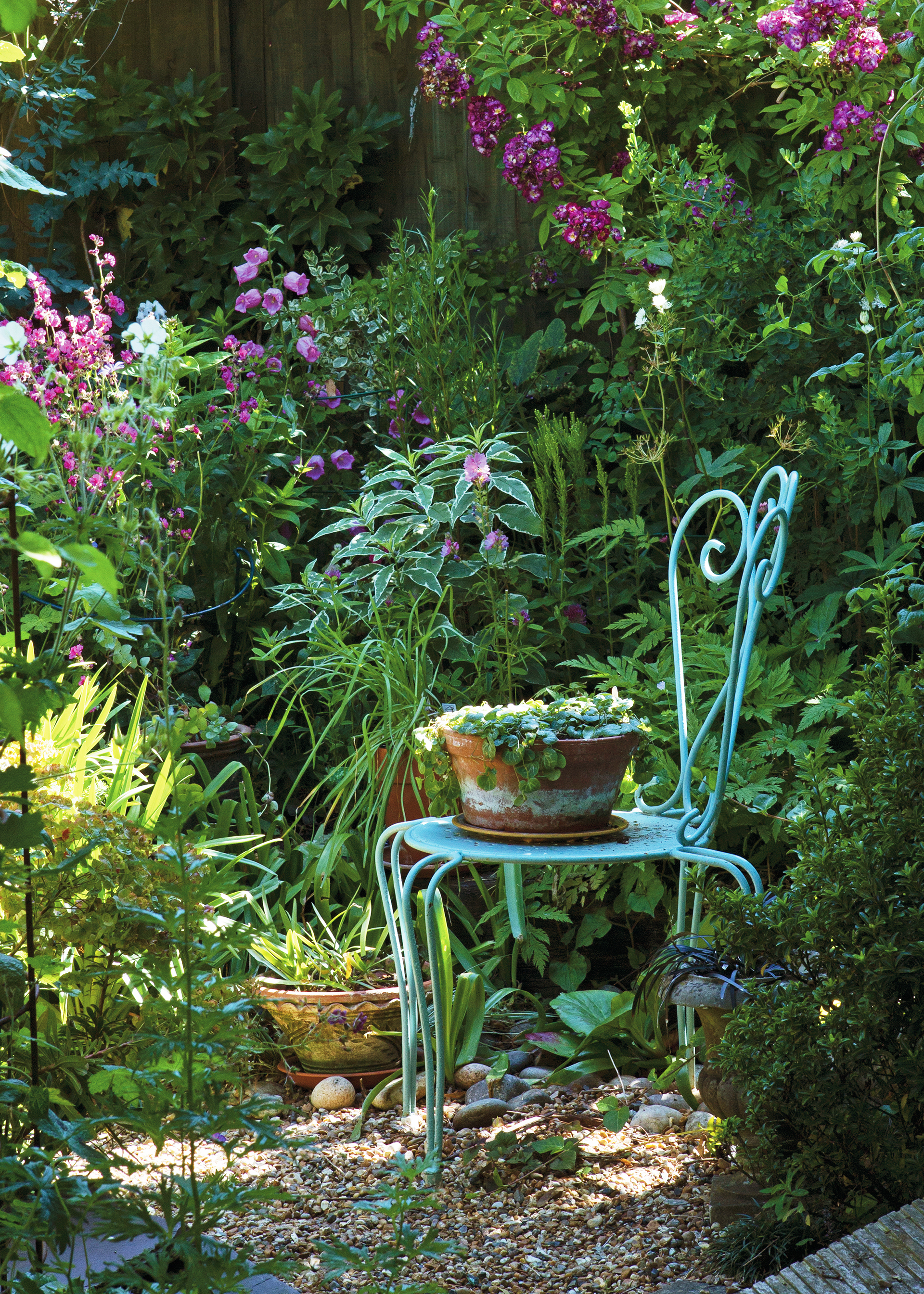
By selecting the right plants you can create pretty vignettes in even the darkest corners of a shady garden
First, you need to determine the type of shade by observing the space at different times of the day through the seasons, as it is seldom constant and is a crucial part of every successful garden design. It will also vary in different parts of the garden. Your shade garden may be in:
- ‘Light shade’, when it is open to the sky but with no direct sunlight.
- ‘Semi-shade’, where it receives three to six hours of direct sun in mid-summer.
- ‘Dappled shade’, with diffused light from deciduous trees.
- ‘Moderate shade’, with two to three hours of midsummer sunlight.
- ‘Deep shade’, under a dense evergreen tree canopy with less than two hours of sun.
2. Check your soil type
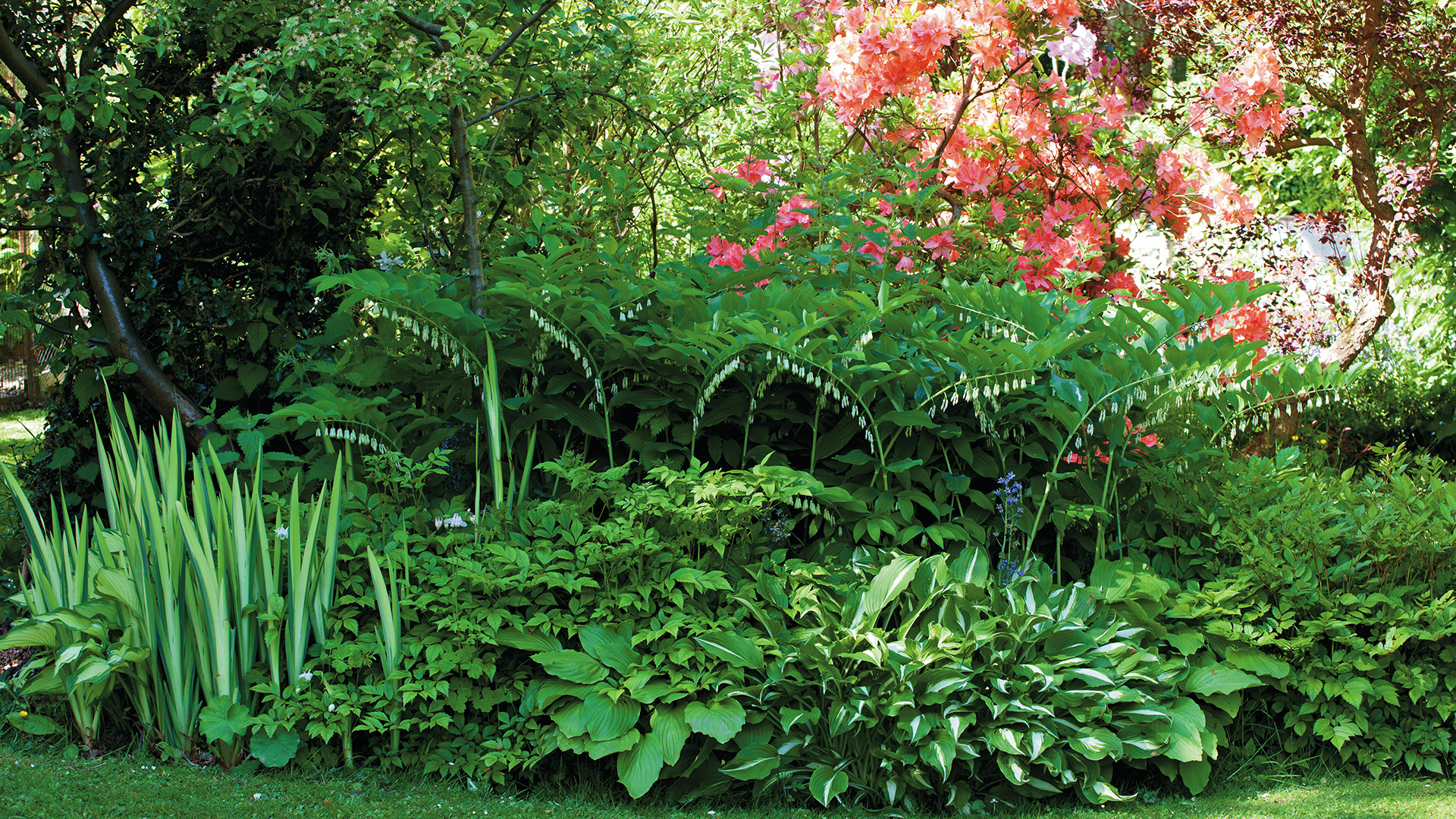
The white flowers of polygonatum make a stunning highlight against lush foliage plants including hostas
There are many garden plants that will thrive in the shade, but each has its own soil needs. Whether it is more acidic or alkaline plays a part, but the most important factor tends to be the soil's ability to retain or drain moisture.
Dry areas in a shade garden tend to be under large trees that have shallow roots, or against walls that face away from the wind and therefore are sheltered from the rain; this is particularly so if your soil is shallow, sandy or chalky.
When planting beneath trees, remove any weeds and scratch the surface of the soil with a garden fork – as the soil can be very compacted – taking care not to damage any roots.
Select plants that will tolerate shade with compact root systems so they don’t compete with the tree for nutrients, and pay attention to watering and fertilizing as plants establish. Add in plenty of organic matter or even homemade compost before planting, and mulch to help the soil retain some.
Damp areas in a shady garden are found in cool, moist woodland areas, near water and with clay soil. Helping your soil here is important, too; use organic matter to improve drainage and mulch to break down and aid the soil structure.
For both dry and damp areas in a shade garden, aim to add some light, color and warmth through planting to enliven the shadows. An advantage is that the structures that cast the shade also offer shelter.
See our guide to garden landscaping to add structure to your outdoor space.
3. Choose the right plant for the right place
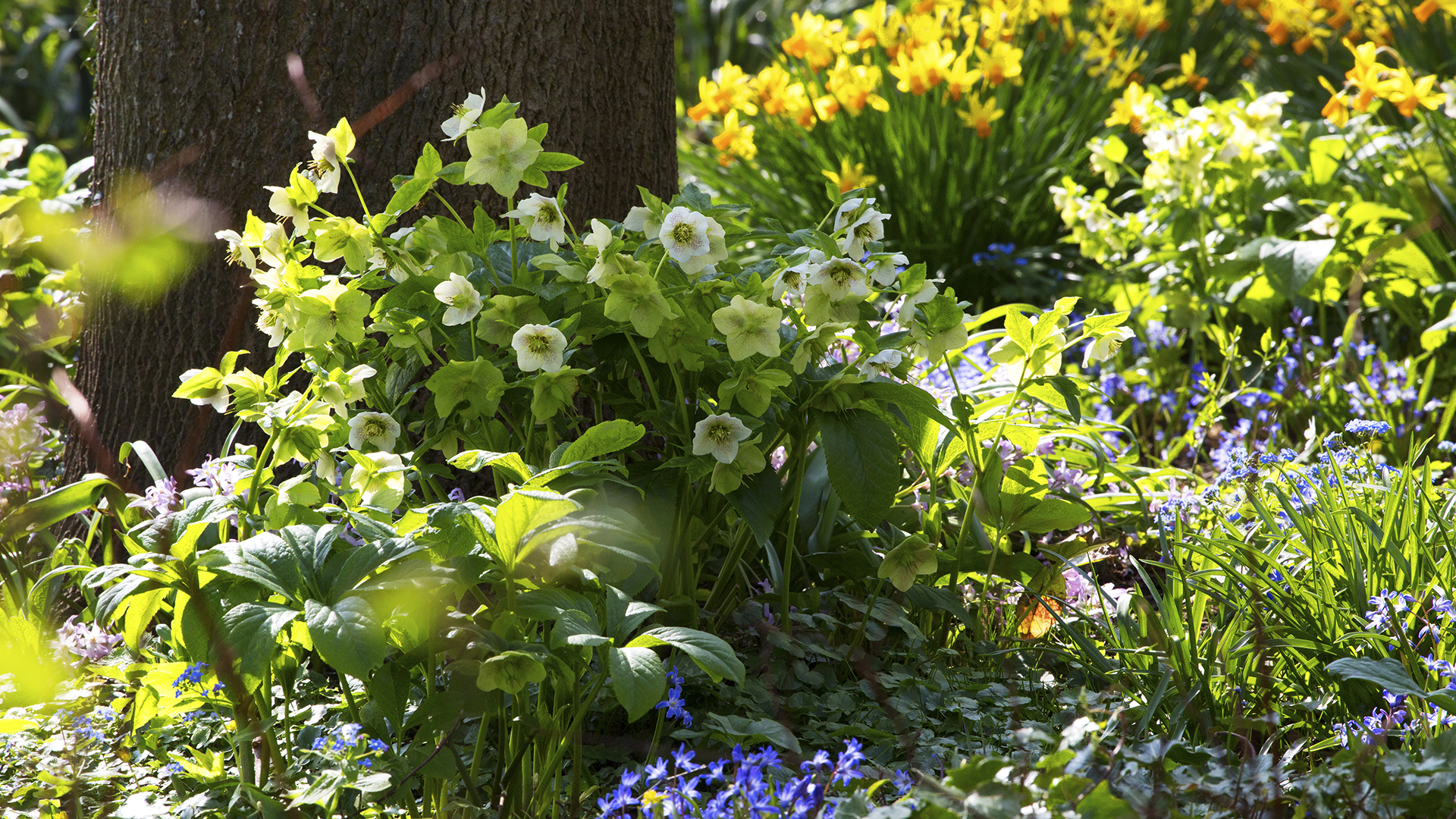
It's important to only grow shade tolerant plants where they won't receive full sun – here, hellebores thrive in dappled shade, while nearby daffodils enjoy the sun
Plants need sunlight to manufacture the sugars for energy and for making their organic molecules, so shade lowers these and reduces growth, unless plants are adapted to those conditions.
Plants that are not suited to a shady garden grow long, lanky stems as they try to reach for some extra sunlight, so avoid these.
4. Grow fruit for foraging
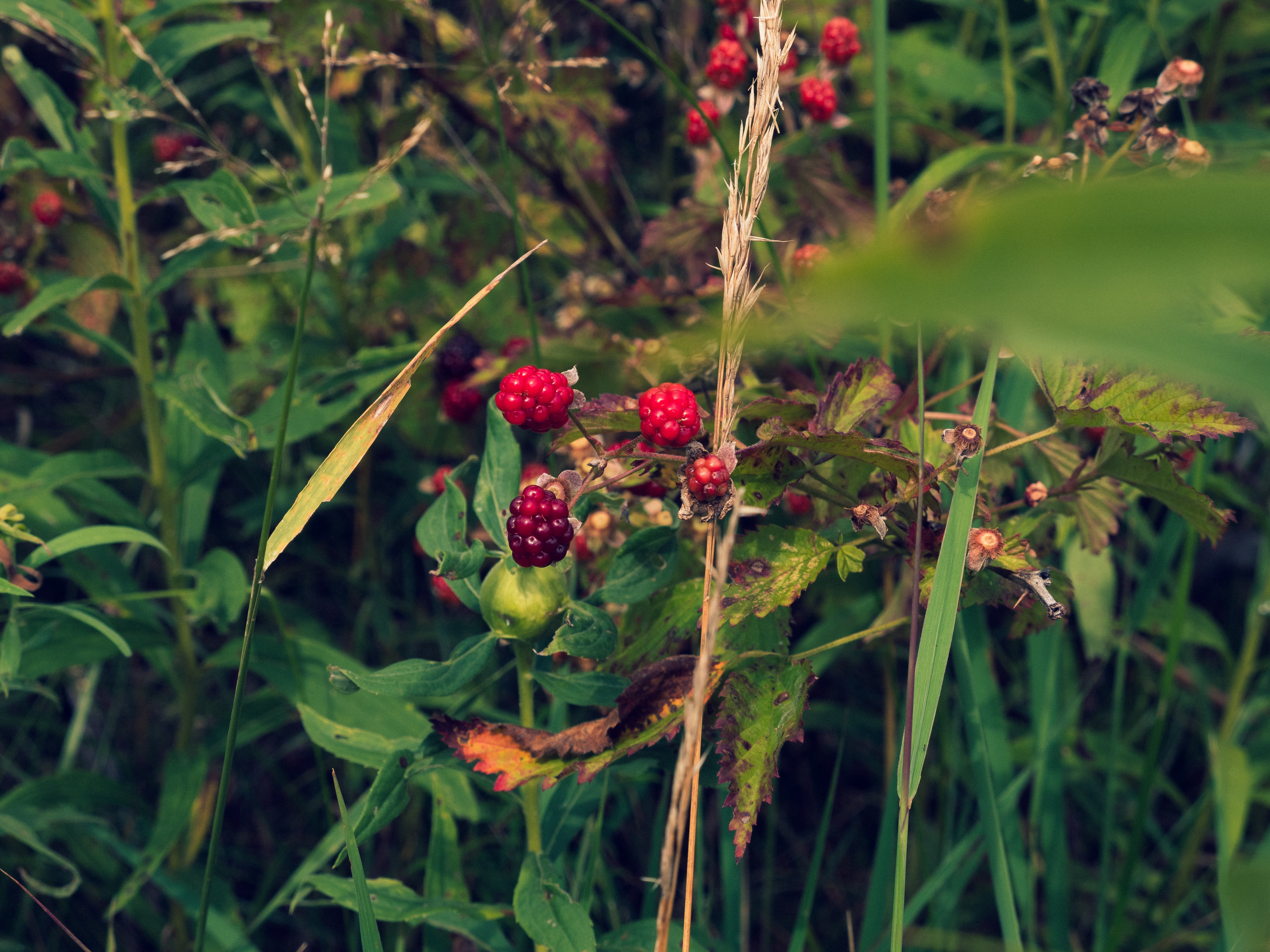
Some fruit and vegetables can be grown in the shade, too and it's the perfect way to create more texture – not to mention flavor – in your surroundings. Fruit-wise, choose gooseberries, grow raspberries, rhubarb, redcurrant and more. Think of all the fruit you can usually find foraging and note how that's usually in the light shade of a woodland forest, so they will do well in partial shade gardens also. They will however need that midday sun in the warmer months to produce so, note that they won't tolerate moderate or deep shade.
Some fruit trees can withstand light shade also – notably cooking apples and pears will be okay on Eeast and North-facing walls.
5. Plant a shade vegetable garden
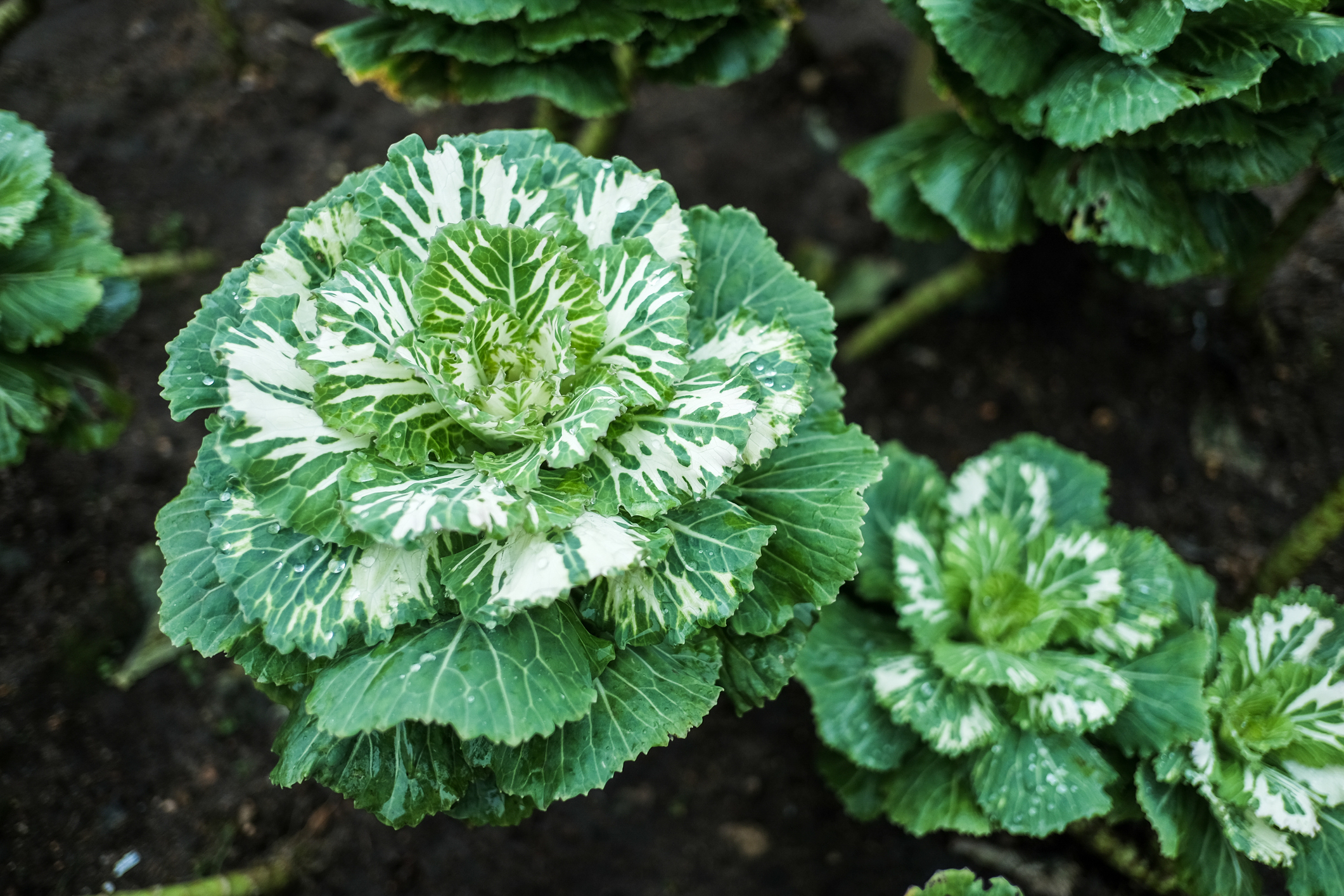
You can situate part of a kitchen garden in the shade, no problem. Reserve these garden beds for growing carrots, kale, mint, chard, beets, kohl rabi, spinach, peas, runner beans and leafy salads too. For a better success rate if growing from seed, you can start these off in a sunnier spot to help their roots establish, ahead of transplanting them to a light shade area. And if you'd like to grow a herb garden, take a look at our in-depth guide.
6. Use focal foliage and evergreen plants for structure
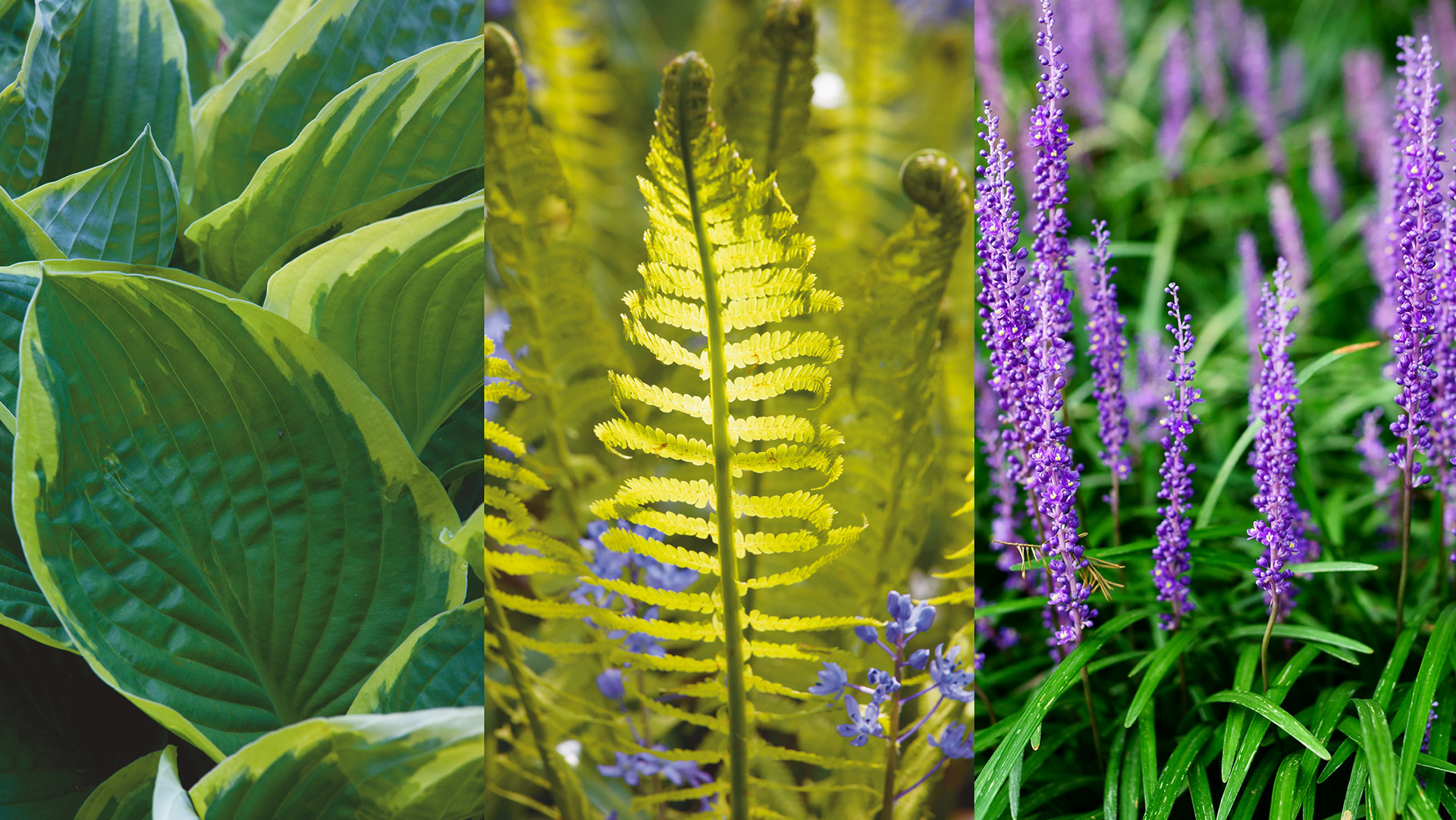
Hostas, ferns and liriope are great shaded garden ideas as they offer striking, lush structural foliage
Some plants may flower less in shade gardens, but often have larger leaves to enable photosynthesis. So experiment with lush foliage textures, layering up different leaf types, and also investigate evergreen plants for shade that will look good year round.
As the shade gets darker your choices lessen to a limited selection of extremely tolerant plants, such as ivy, ferns and liriope.
Include some evergreen fillers with gleaming foliage for a year-round lustre, combine different forms and heights, and then infill with more ephemeral highlights.
Consider making a focal point of plants with glossy reflective leaves or foliage and flowers that give the impression of light, such as gold, silver or variegated leaves and luminous white or pale flowers.
Good shade garden ideas for focal foliage include:
- Hostas will spread and are grown for their decorative large leaves that are green, gray or variegated – just watch out for snails.
- Ferns offer hardy choices for both dry and moist shade areas. Many are evergreen shade plants.
- Liriope is an evergreen perennial with grassy leaves that provide excellent groundcover. It produces wands of grape-like purple flowers in fall.
- Euphorbia amygdaloides is an evergreen perennial that features sprays of yellow-green flowers from spring to early summer.
- Brunnera macrophylla has heart-shaped leaves, forget-me-not like flowers and is great for mixing with other shade tolerant choices in woodland garden borders.
- Alchemilla with its large leaves, beads of sparkling water droplets and trouble-free nature is ideal for edging shady borders.
7. Choose perennials wisely
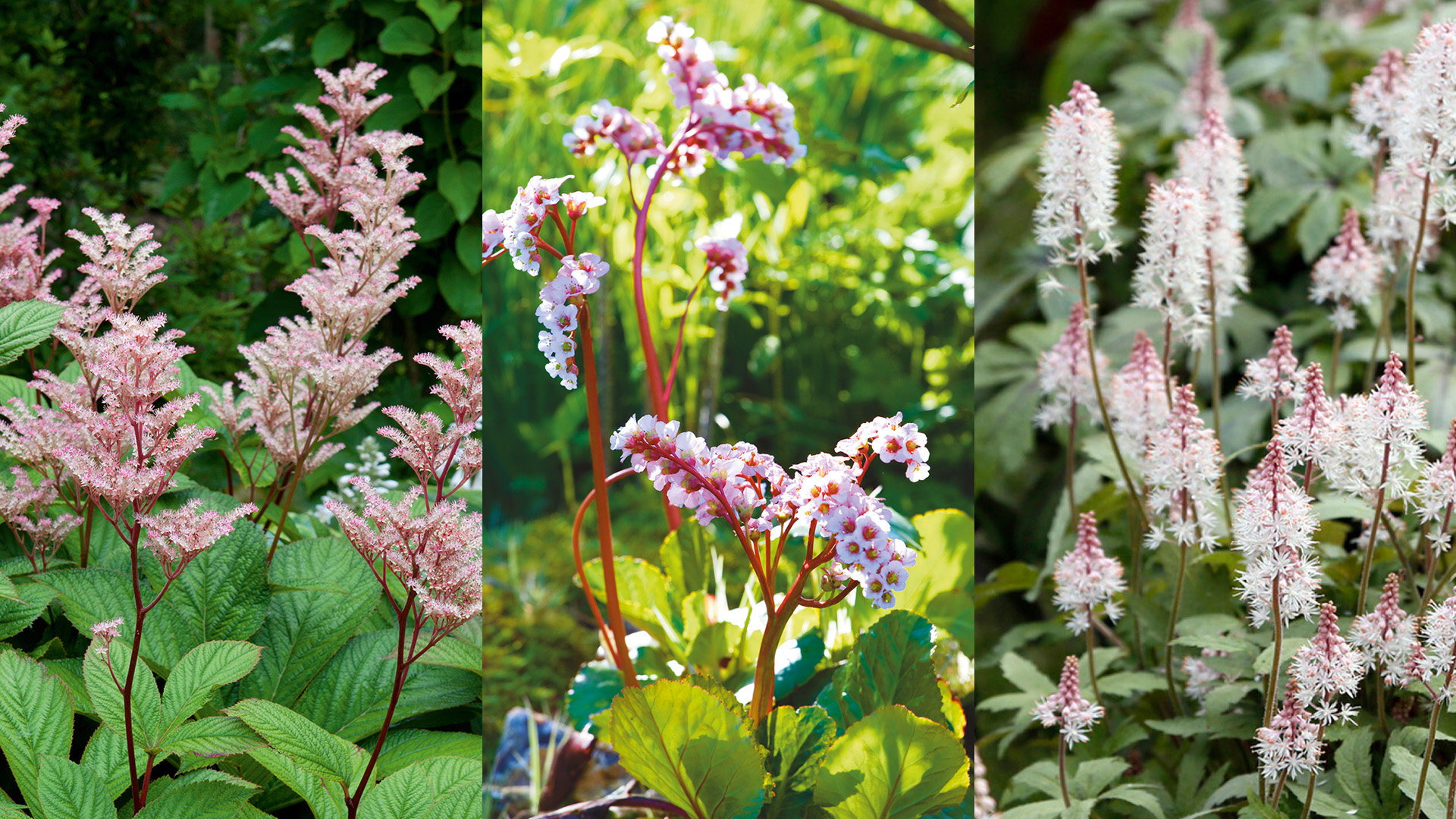
Rodgersia, bergenia and tiarella are all reliable perennials that work well in shade gardens
The benefit of perennials is that they will keep coming back year after year. This not only makes shade gardens more established over time, but it reduces maintenance of annual replanting, and saves you money in the long run. These are good perennial varieties to consider:
- Bergenias are hardy perennials with leathery leaves that turn a burgundy tone in fall and winter, as well as forming a dense groundcover for suppressing weeds.
- Tiarella bloom with cones of cream and pink flowers in late spring and summer. They are hardy, reliable performers.
- Rodgersia are perennials that grow in damp areas. They feature large leaves that provide foliage and texture for much of the year.
- Erythronium form carpets planted in drifts in woodland areas in moist, rich, well-drained soil.
- Astilbe add color and texture with their plumes of flowers and some also have showy foliage.
- Polygonatum, Solomon’s Seal is pretty in a shady border with its arching clusters of tubular white flowers.
8. Focus on bright flowers
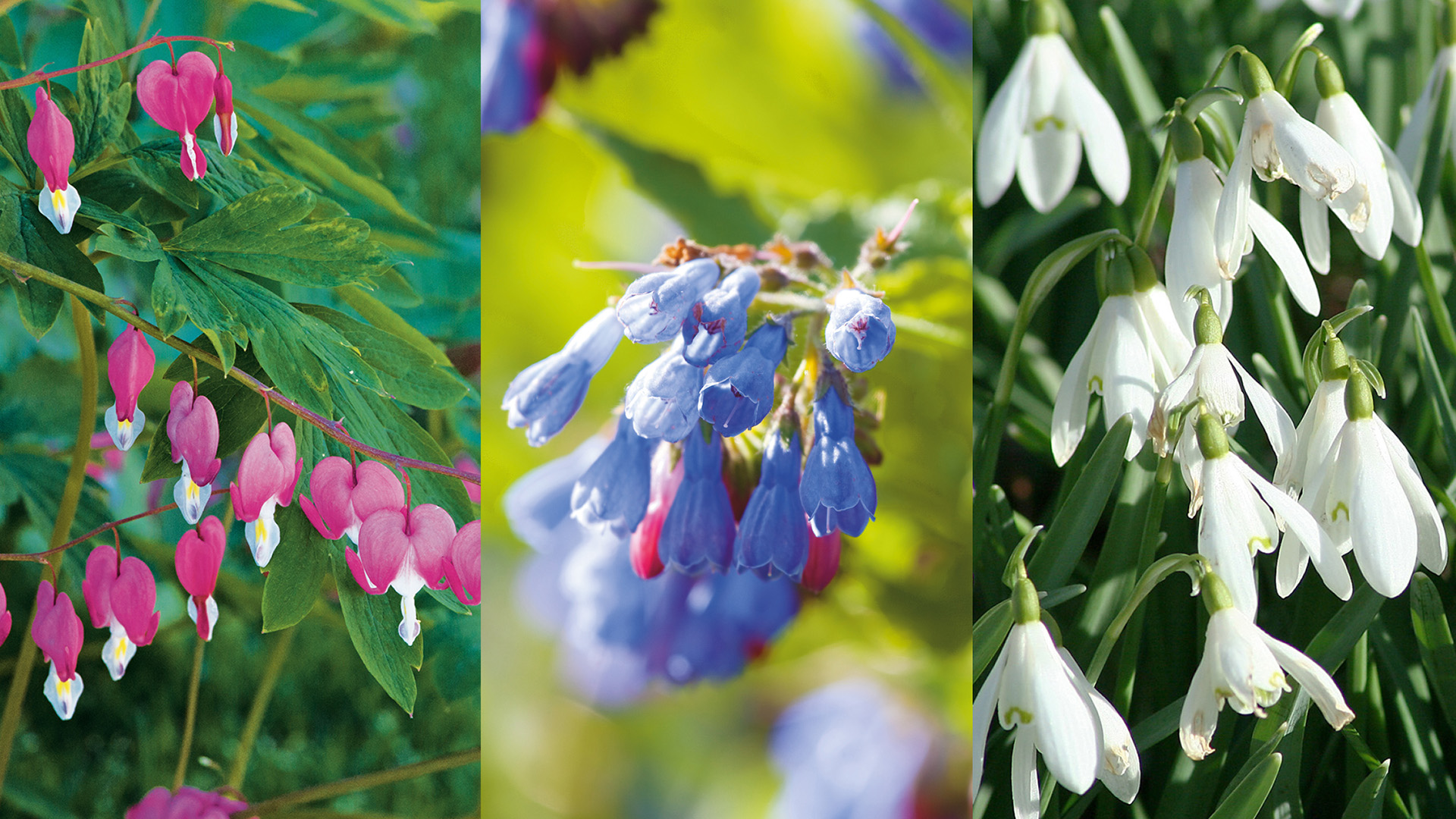
Dicentra, pulmonaria and snowdrops are beautiful flowering plants
Pale and brightly colored flowers work beautifully to light up the shadows, so as well as lush foliage plants, try to add more flowering plants where you can. White in particular adds an etherial quality. The classic choice of layers of rich greens relieved by touches of white flowers around seats, trellises and statues creates a cool oasis that also glimmers in twilight. An added benefit of flowers is that any fragrance is accentuated in more confined spaces. Good choices for colored florals include:
- Dicentra are lovely traditional perennials for part shade with strings of heart-shaped flowers held above divided blue-green foliage.
- Pulmonaria and lungwort are good groundcovers and ideal in borders and big flower beds. These deep shade loving flowering plants have funnel shaped blooms that open pink but then turn blue.
- Snowdrops will flourish in light shade in moist soil, popping through ice and snow in late winter and early spring. They will easily naturalize in grass, providing a blanket of white.
9. Use bedding plants to the max
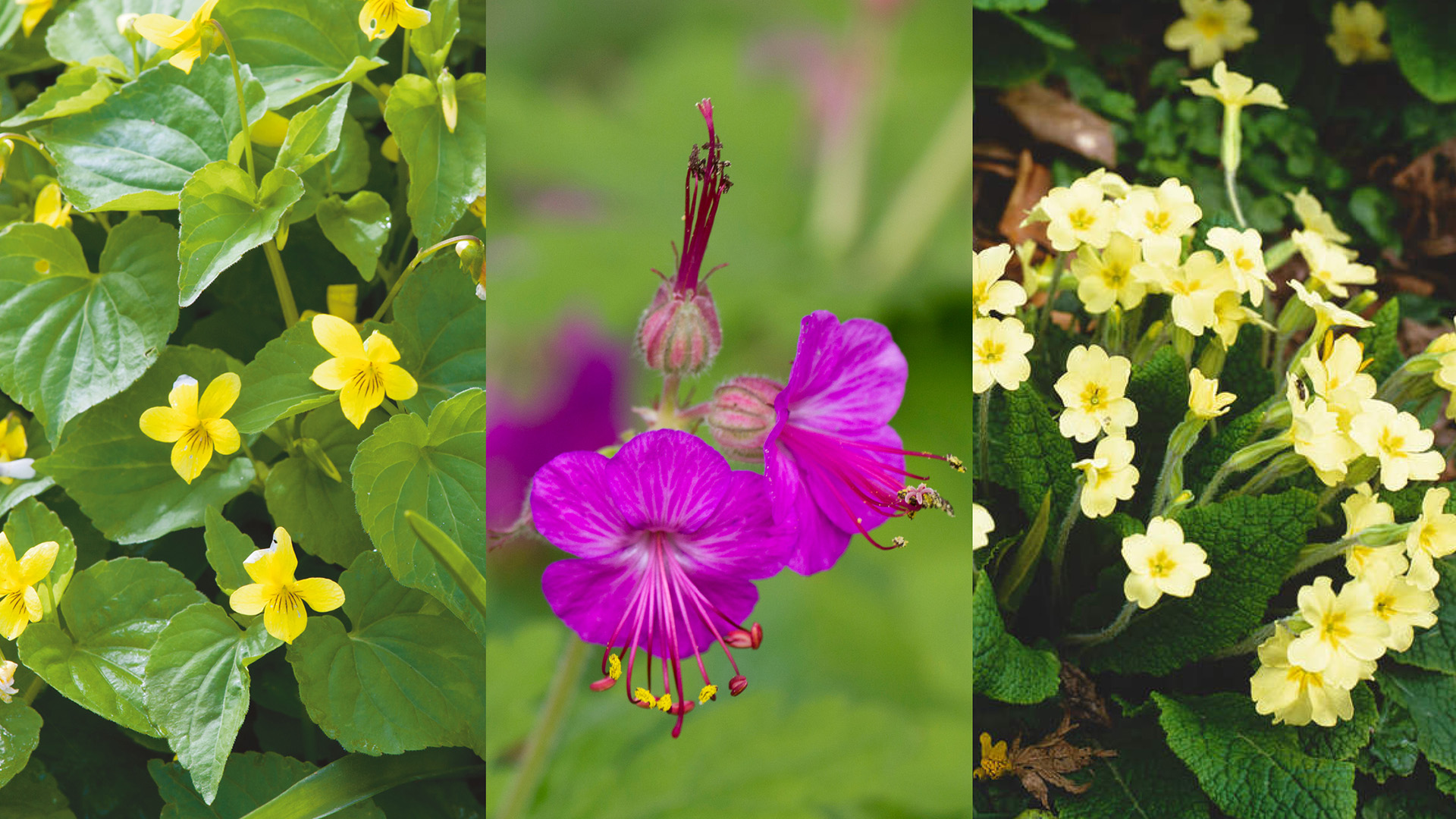
Violets, geraniums and primroses are all fantastic bedding plants for shade gardens
Often thought of as sun lovers, bedding plants are ideal for adding year-round color. They needn't just be annuals either – go for perennials that will come back year after year. Some of the best bedding plants for low-light spots are:
- Violets with their heart-shaped leaves and sweetly scented flowers, need moist shade.
- Primulas and primroses add light to dark areas in tones of white, yellow, cream, pinks.
- Geraniums have different preferences when it comes to light, but certain types, such as macrorrhizum, nodosum and pheum, survive on almost no direct sun, making them fantastic bedding plants for shade gardens. See more flower bed ideas in our edit.
- Begonias grow best in partial shade, in moist but not waterlogged soil.
10. Add containers to create impact and structure
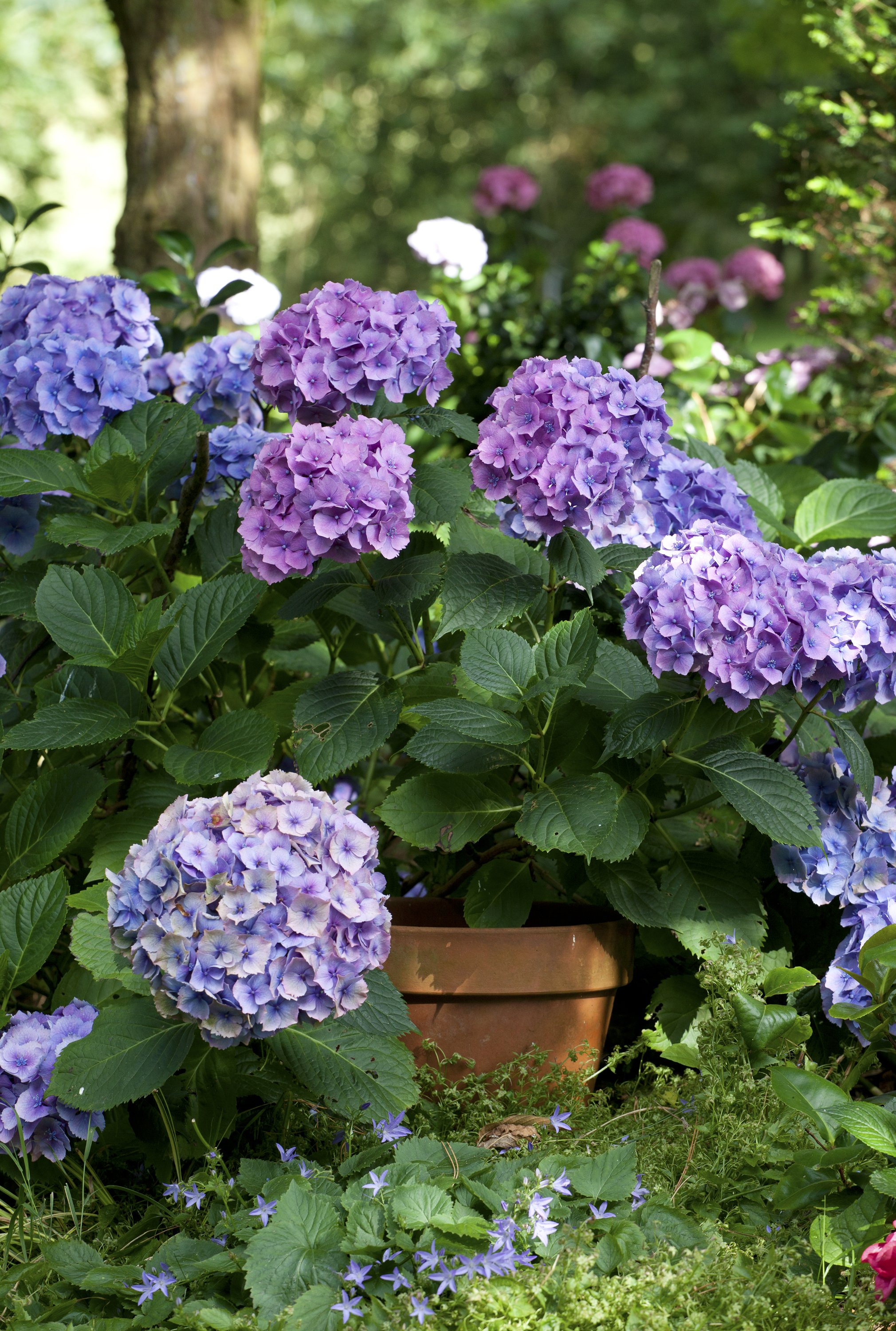
Potted hydrangeas are a beautiful choice of colour throughout summer and into autumn in dappled shade, planted in swathes of mixed hues or repeated varieties
Container gardening will allow you to move your planting around with the seasons, making it easier to weave in shade-tolerant plants for splashes of color. This idea works so well because you can monitor the success of a plant and adjust its position if you feel it would benefit from more or less sun. Hydrangeas, fuchsias, impatiens, pansies and begonias all do well in pots.
10. Prune trees to reduce shade
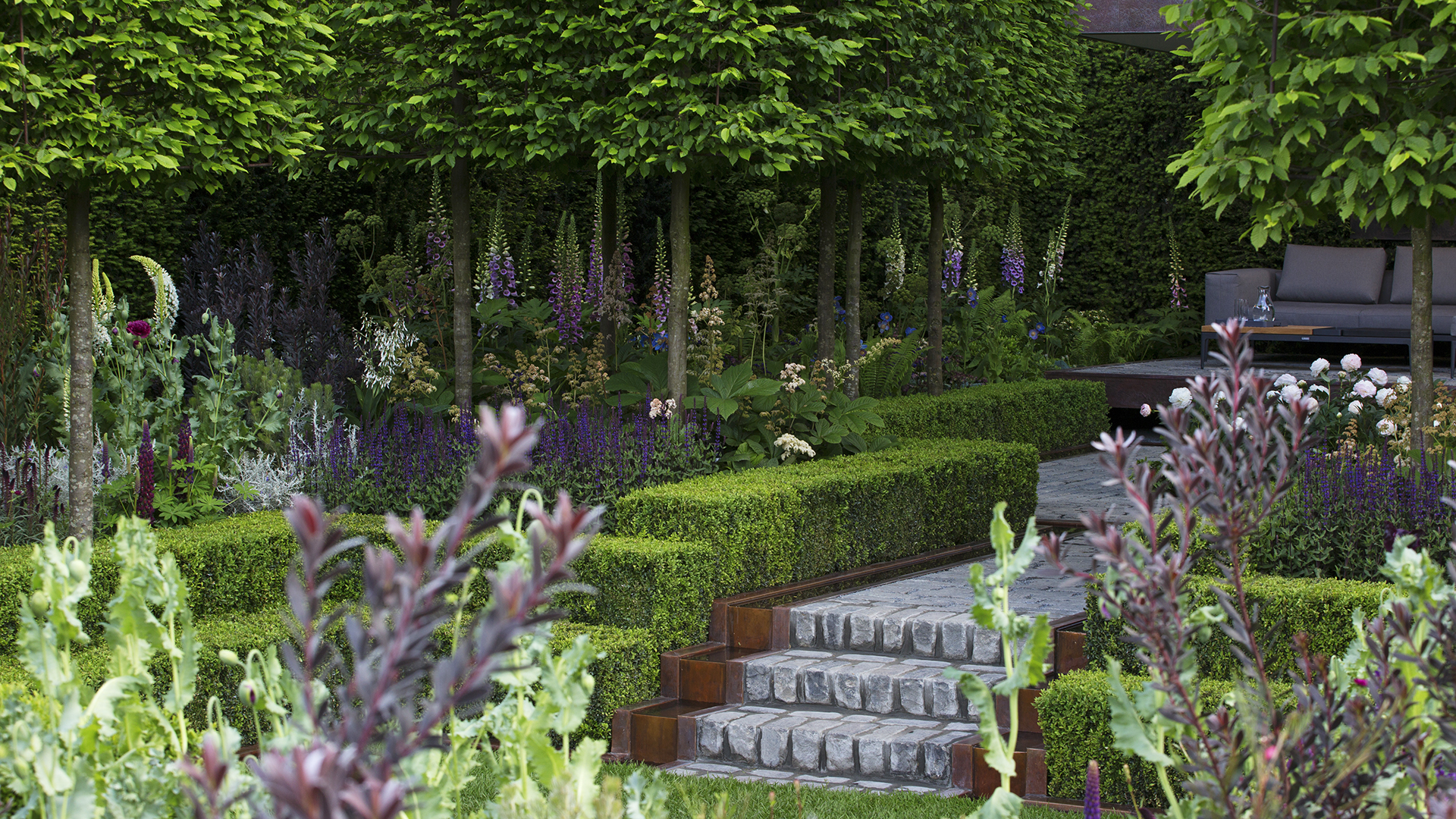
Trees are great for adding structure and privacy to gardens, but also create shady areas
If you feel there is too much shade in your garden, look for ways to reduce it. Prune low branches of trees to let in more light or thin out higher branches to lighten the canopy. If your neighbor's trees or hedges are getting out of control and blocking too much light, politely ask them to think about addressing them.
11. Increase the sense of light with painted walls
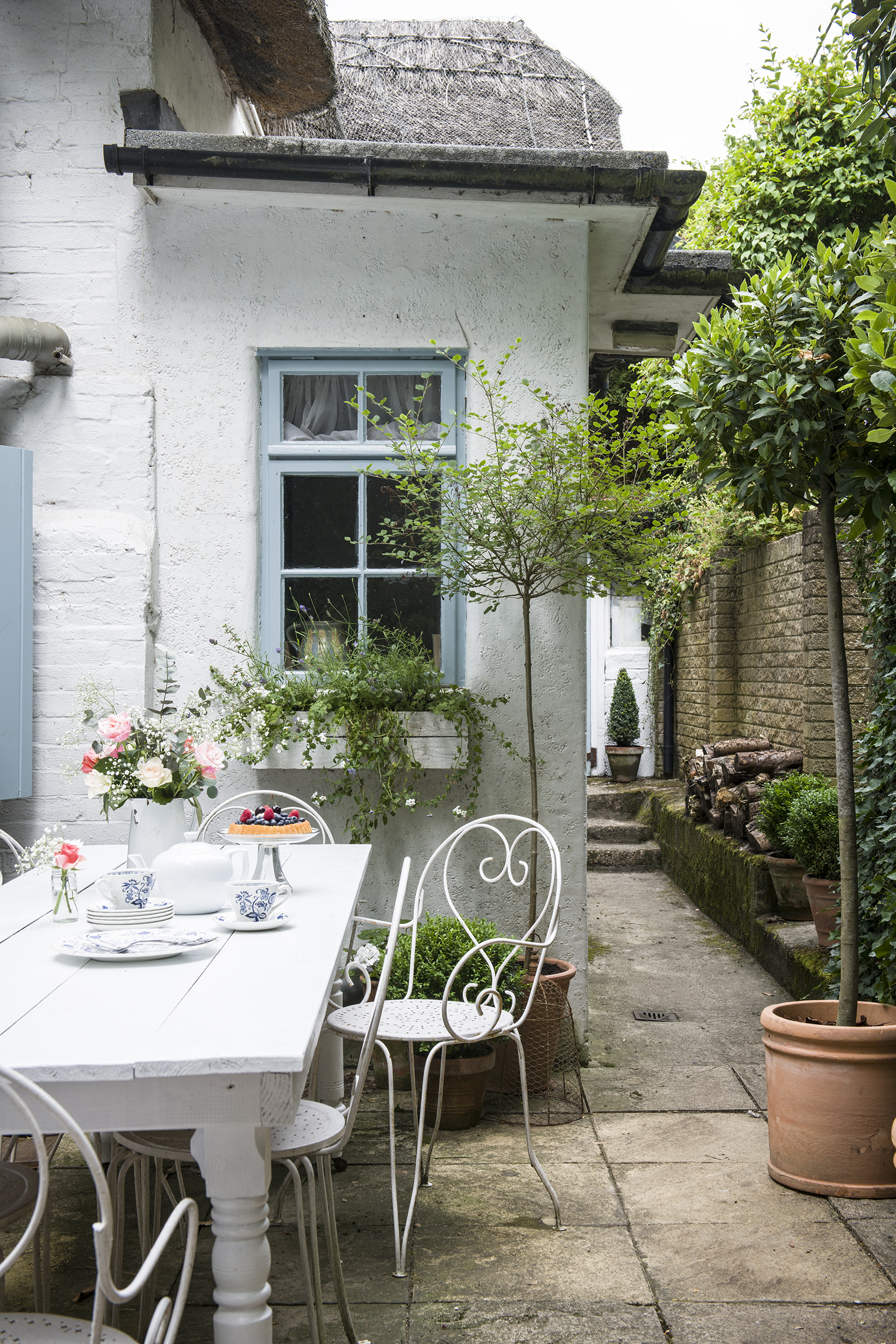
Paint nearby walls, or even fences and sheds in white or light tones to reflect and diffuse light into the garden, especially if large swathes of it are in darkness for most of the day. This can also be a handy tip if you have a trellis, as it can bring a wash of color or light into an otherwise very shaded area.
12. Employ more clever design tricks to increase the sense of light
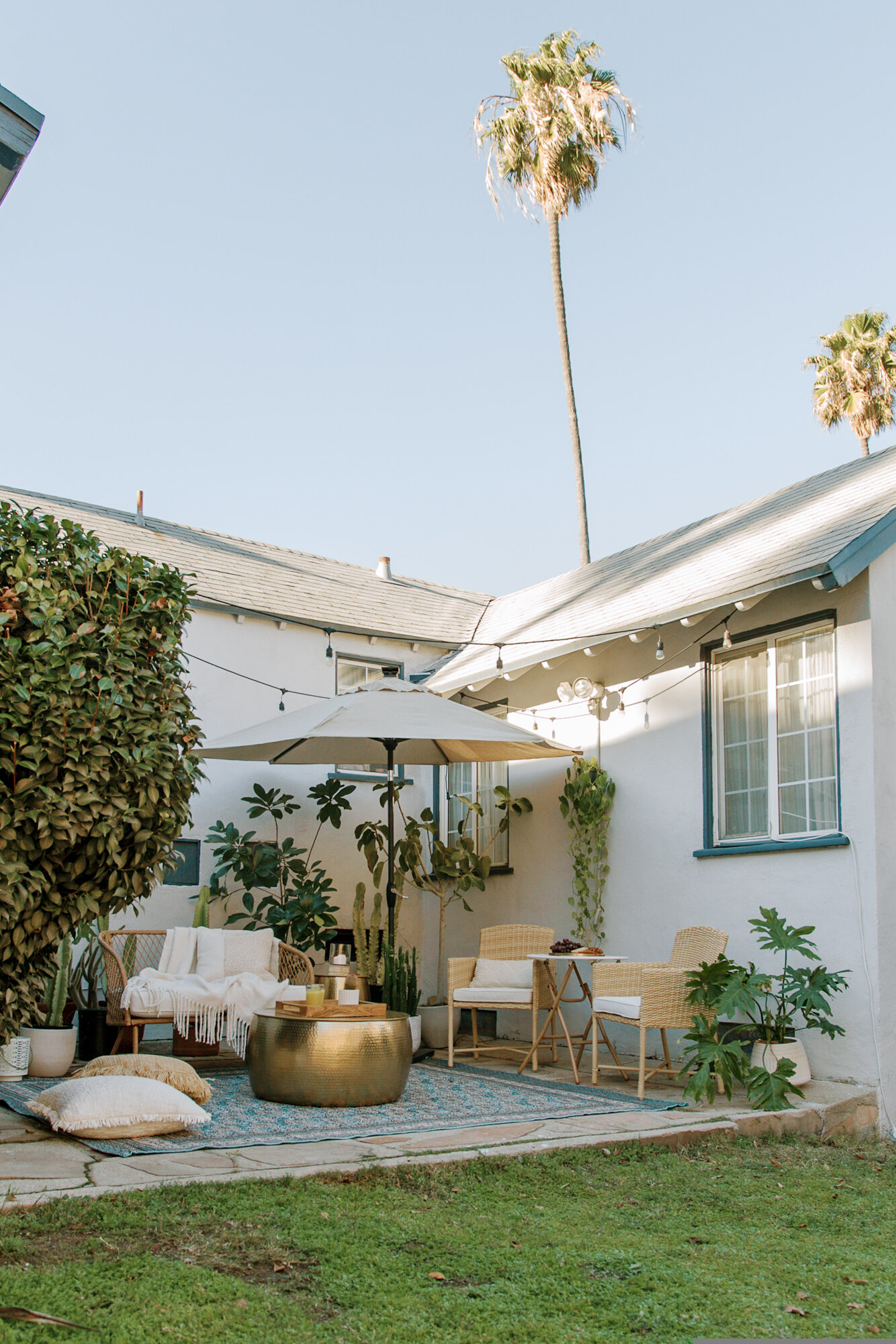
Shaded patio spot? One of our favorite patio ideas – use pale colored paving, stones or even gravel to reflect light and lighten the mood of a space. For more effect, ensure any surrounding walls are painted in a light color or brightly stained.
13. Use garden lighting to add structure
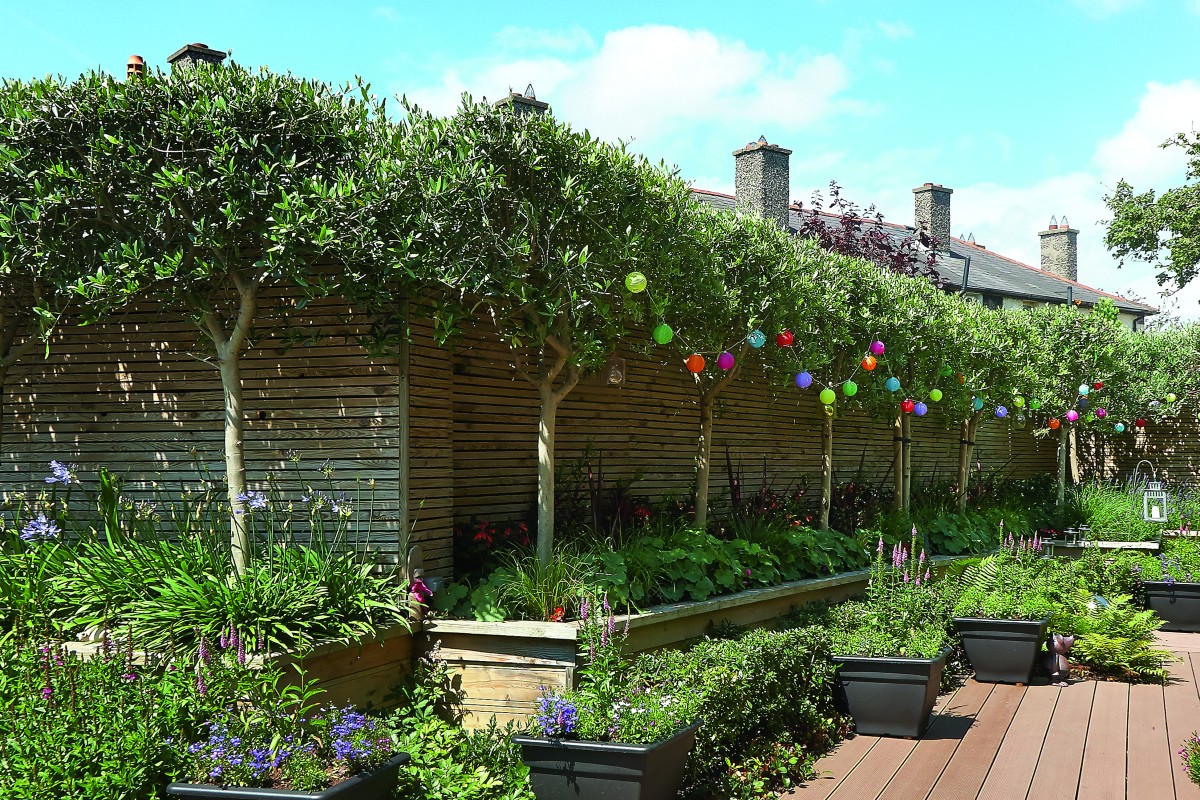
Illuminate containers, water features or even trees so you can also enjoy the scene at night. Choosing colored lighting will also add to a shaded display by day. You could even plant some highlight choices in white flowers and variegated foliage at the base of trees and shrubs to give an illusion of light, especially at dusk. Snowdrops are a brilliant choice for this. In fact, you can find all our garden lighting ideas in our edit.
14. Reflect light with a water feature
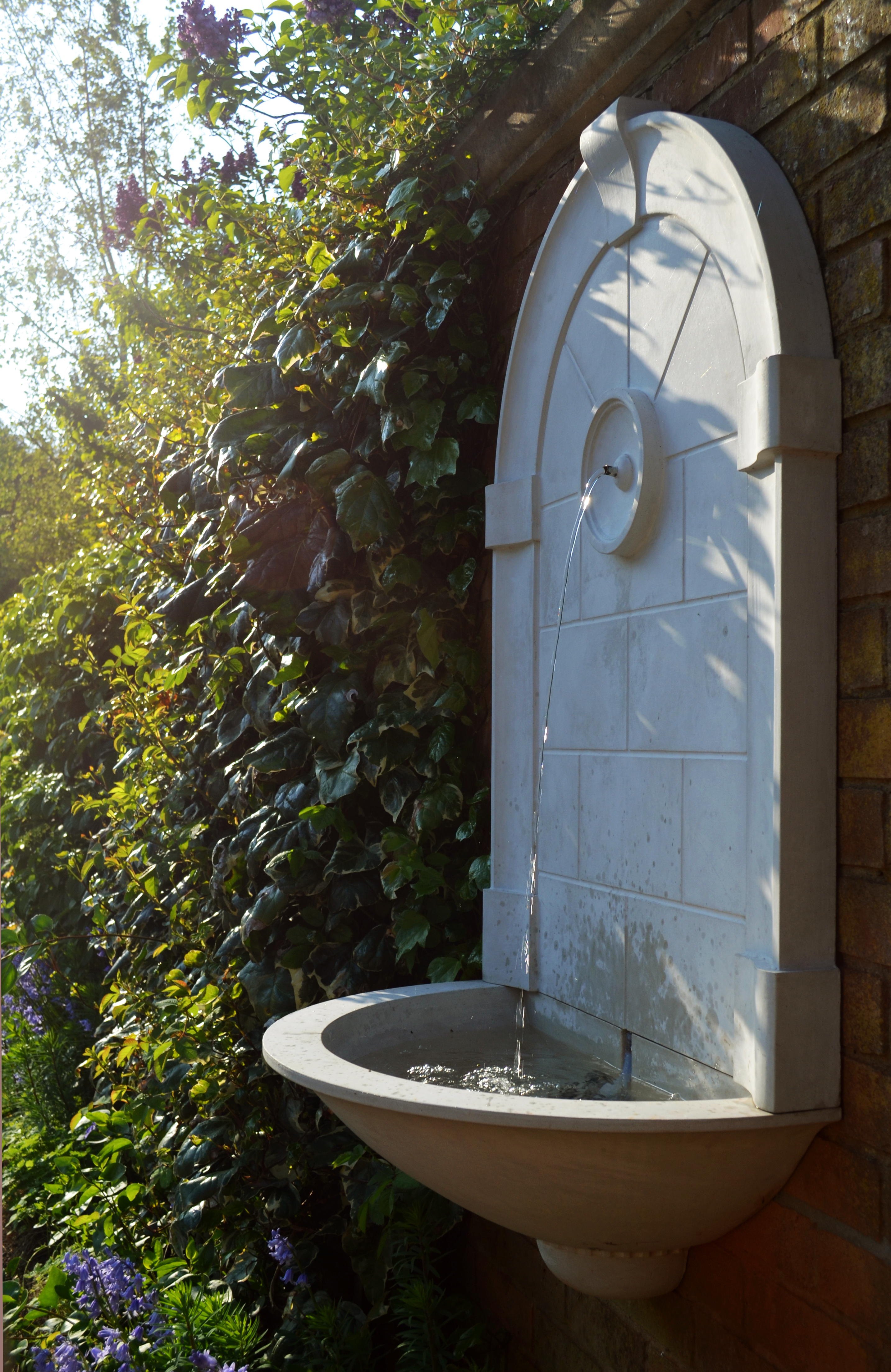
Water will spread light in various ways, from trickling fountains catching in the light to flowing streams. Consider a small pond to add a little luminosity to your shade garden spot, or even a statement water feature – not only will it be visually very beautiful, but it will also encourage lots more wildlife in.
15. Let accessories work in your favor
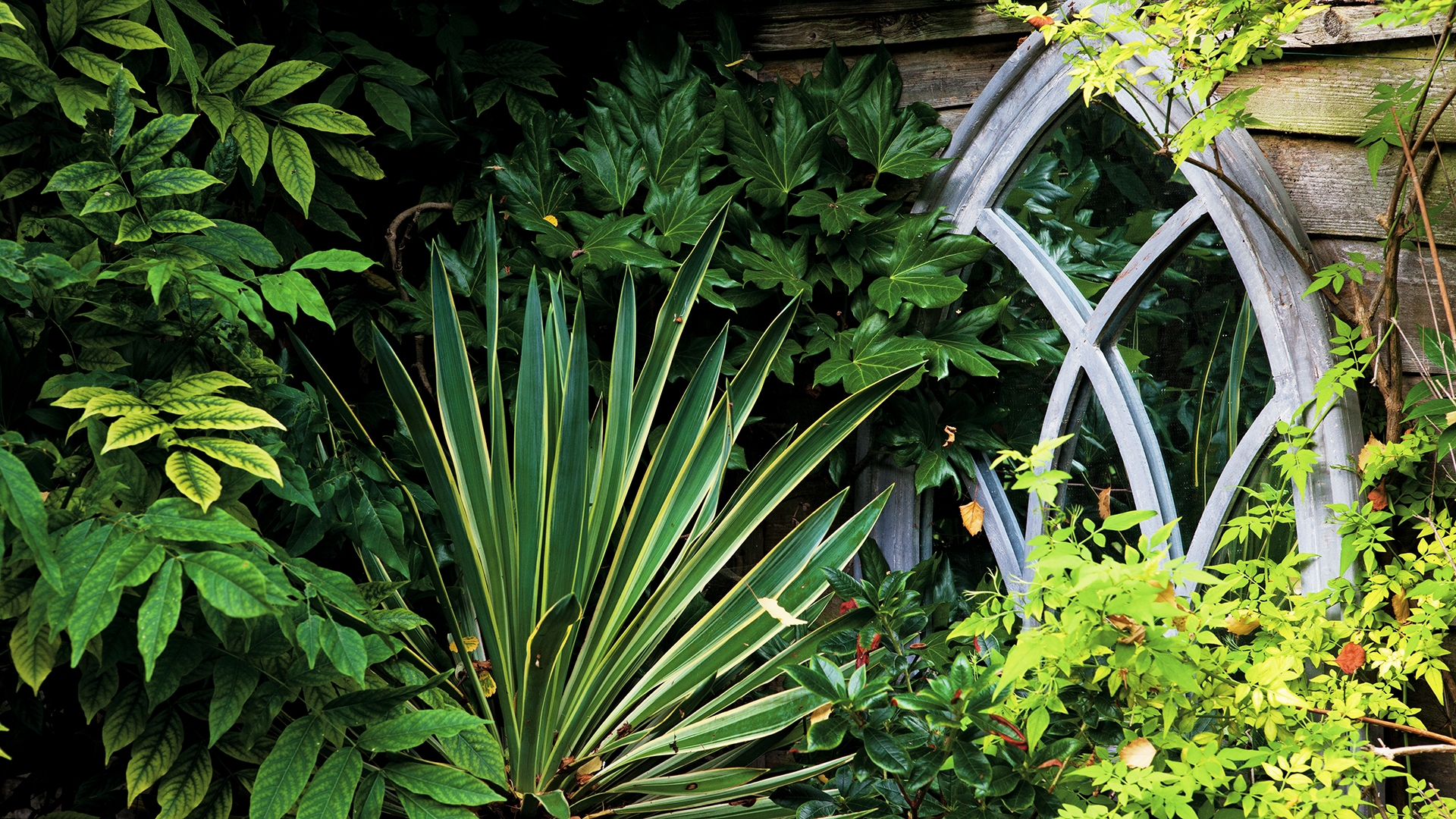
A design trick in a shade garden is to use mirrors to brighten a dark corner by reflecting light and warmth from the sun
Finally, an excuse to include a mirror in a garden space! Place reflective panels or mirrors to not only give the illusion of space but also to brighten a dark space or reflect light and warmth from the sun. Glass or stainless steel sculptures can also be used to reflect light and add structured interest year round in shade gardens.
Subscribe to Period Living
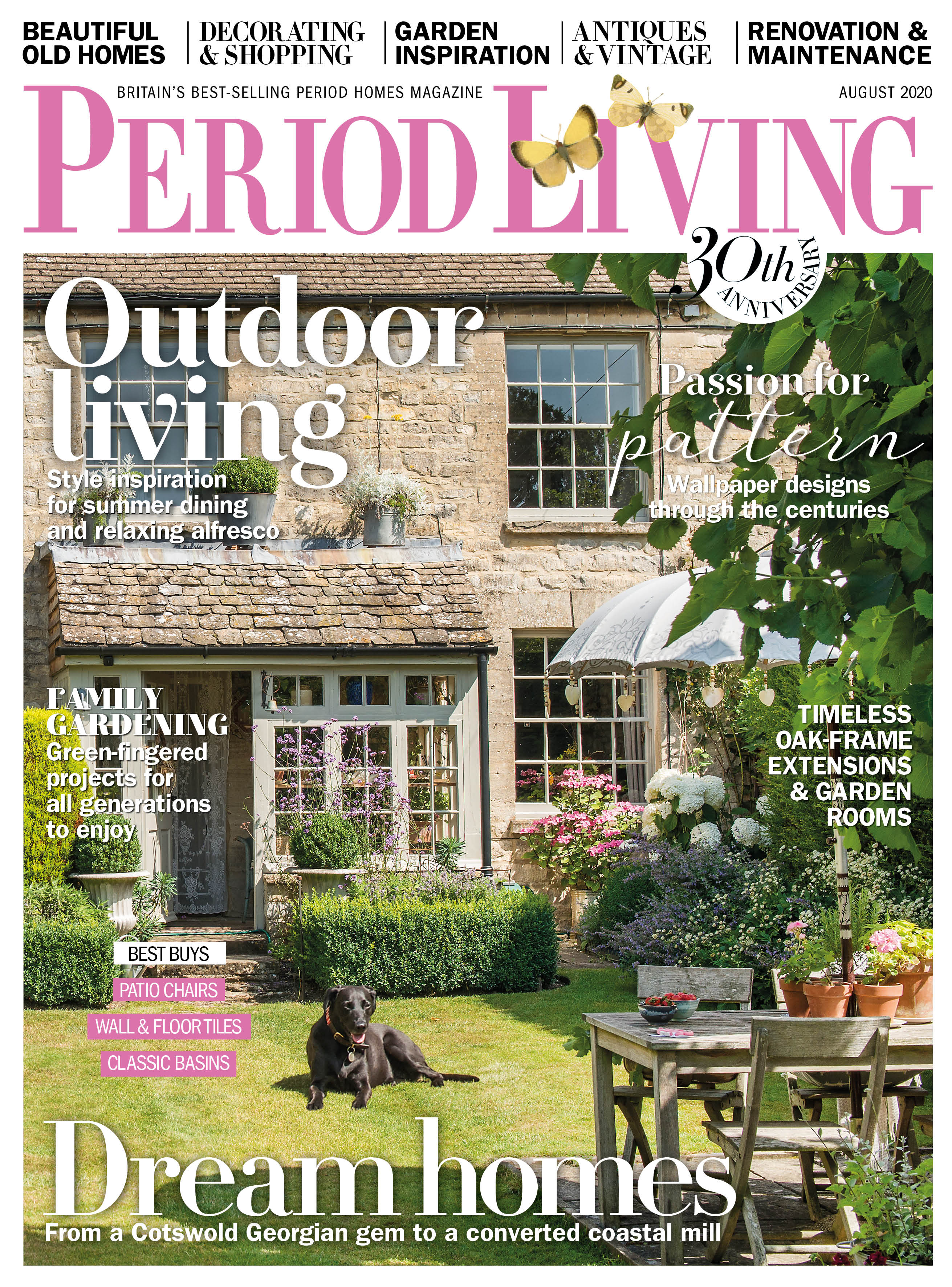
Period Living is the UK's best-selling period homes magazine. Get inspiration, ideas and advice straight to your door every month with a subscription.
Now to create the shade gardens of our dreams!
Join our newsletter
Get small space home decor ideas, celeb inspiration, DIY tips and more, straight to your inbox!
-
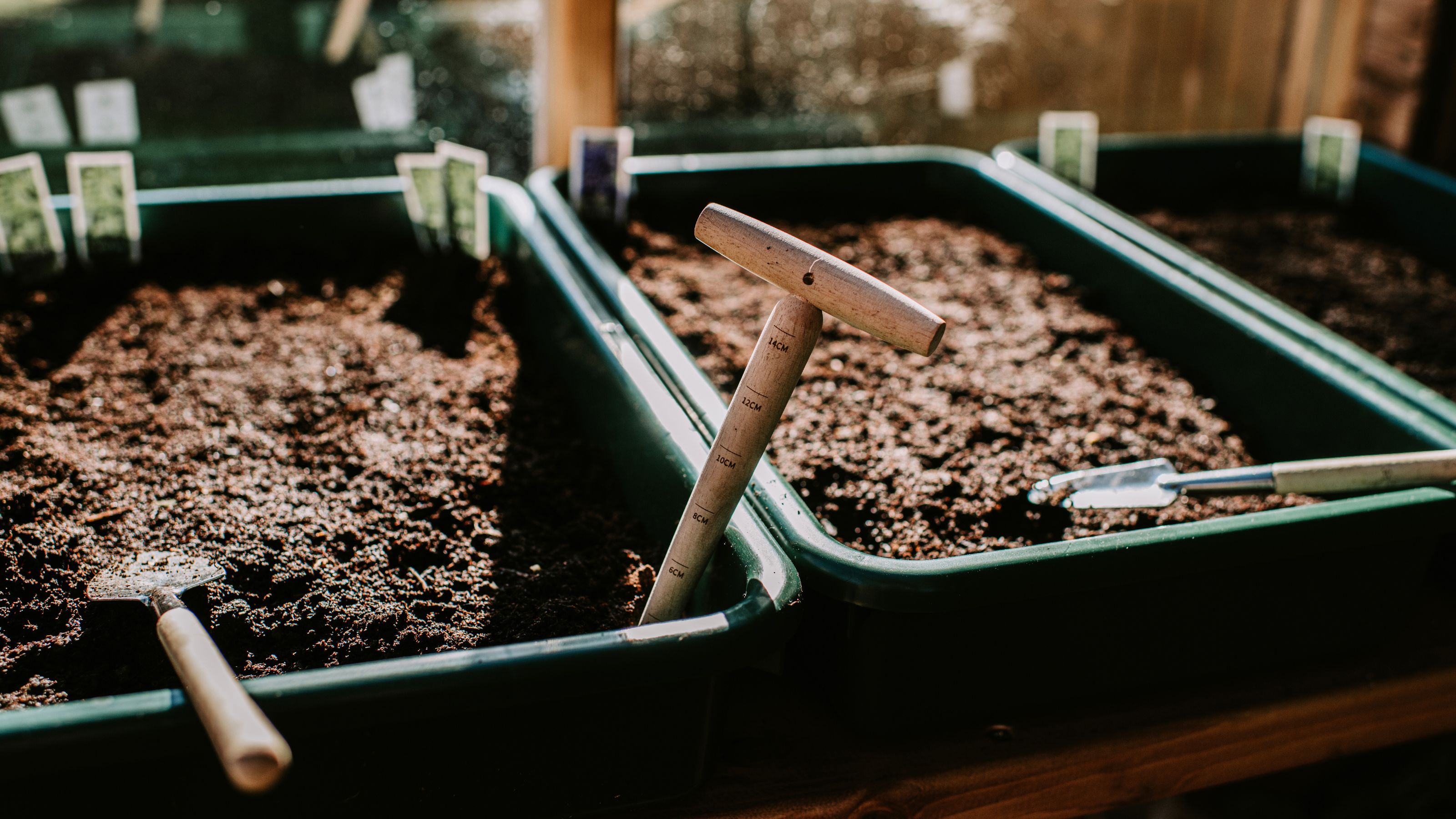 How to make compost — 8 easy steps gardening pros always use
How to make compost — 8 easy steps gardening pros always useLearn how to make compost at home in seven easy steps, whether you have a bin or want to create a compost heap. We've asked pros for their top tips
By Eve Smallman
-
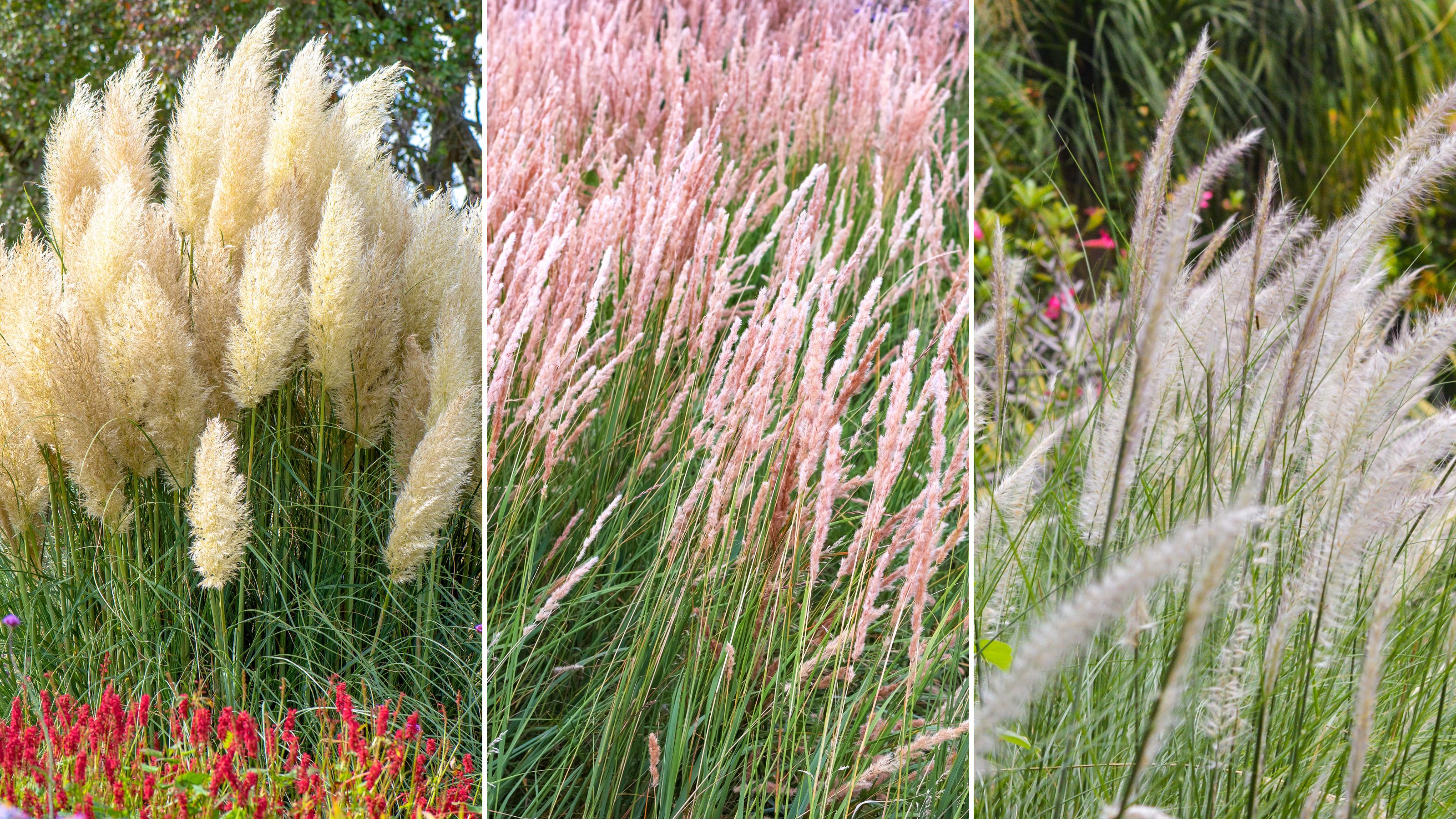 Planting ornamental grasses — the best types experts love and how to grow them
Planting ornamental grasses — the best types experts love and how to grow themWe've got you covered on planting ornamental grasses, speaking to experts about what ones to grow, how to grow them, and factors to consider
By Eve Smallman
-
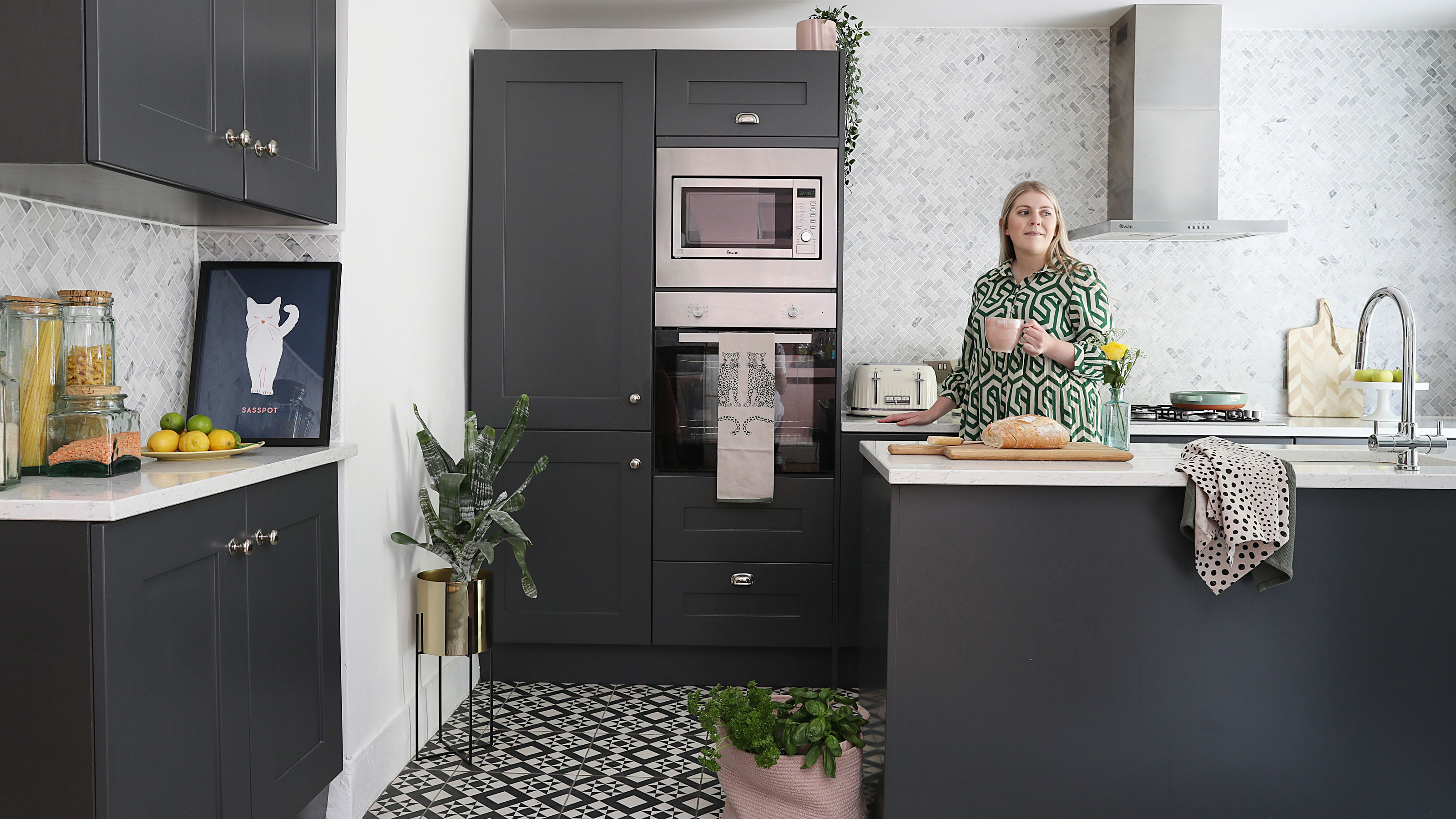 "Grotty" terrace is transformed with French flair and Ibiza vibes in the garden
"Grotty" terrace is transformed with French flair and Ibiza vibes in the gardenEsther Pillans' tired-looking Victorian terraced house was given a makeover with a touch of Parisian chic
By Ellen Finch
-
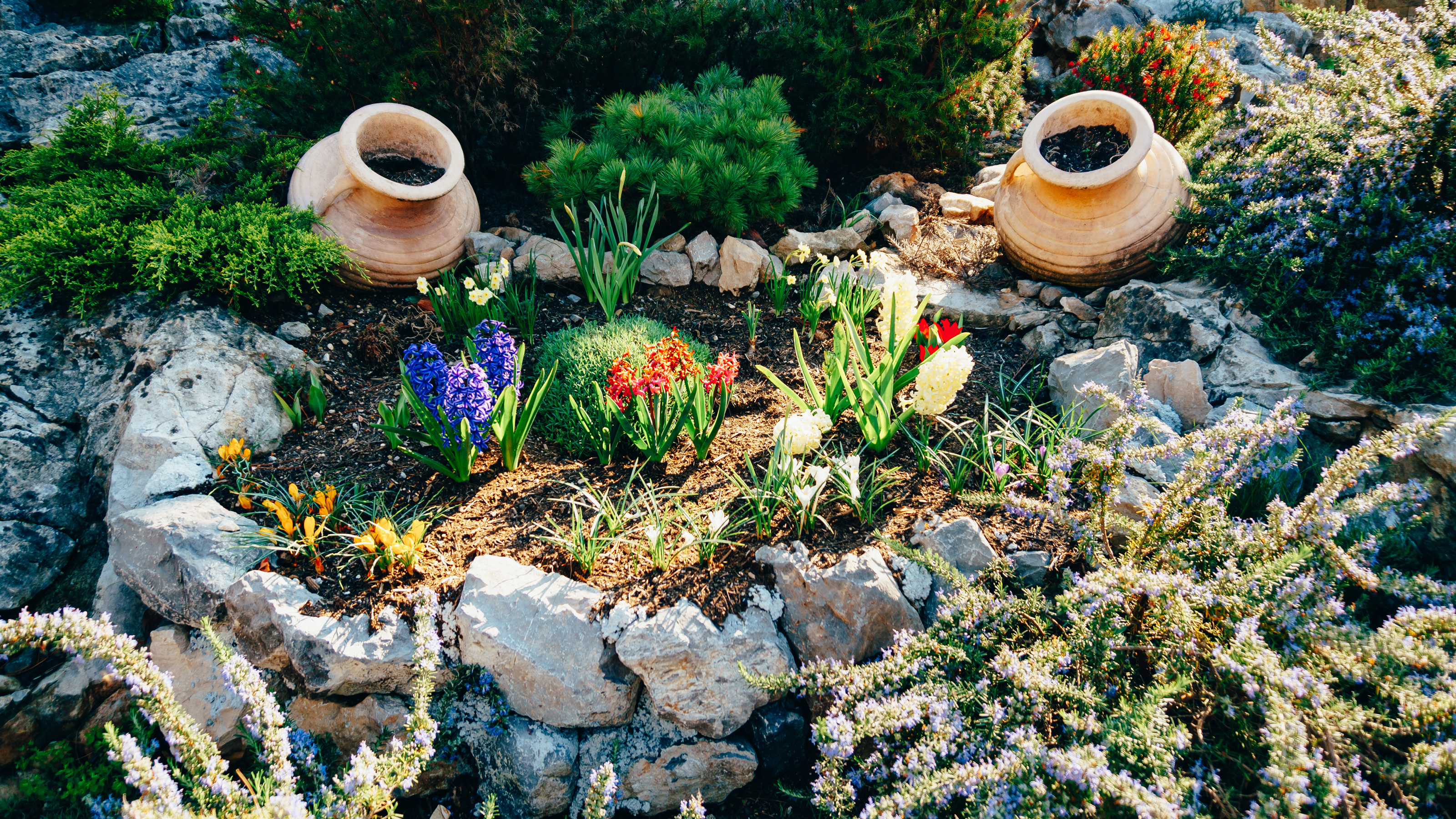 Rock garden ideas – 10 DIY ways to create a rockery
Rock garden ideas – 10 DIY ways to create a rockeryThese rock garden ideas are suitable for outdoor spaces big and small. Create your own rockery on a lawn or even on a balcony with just a few materials.
By Anna Cottrell
-
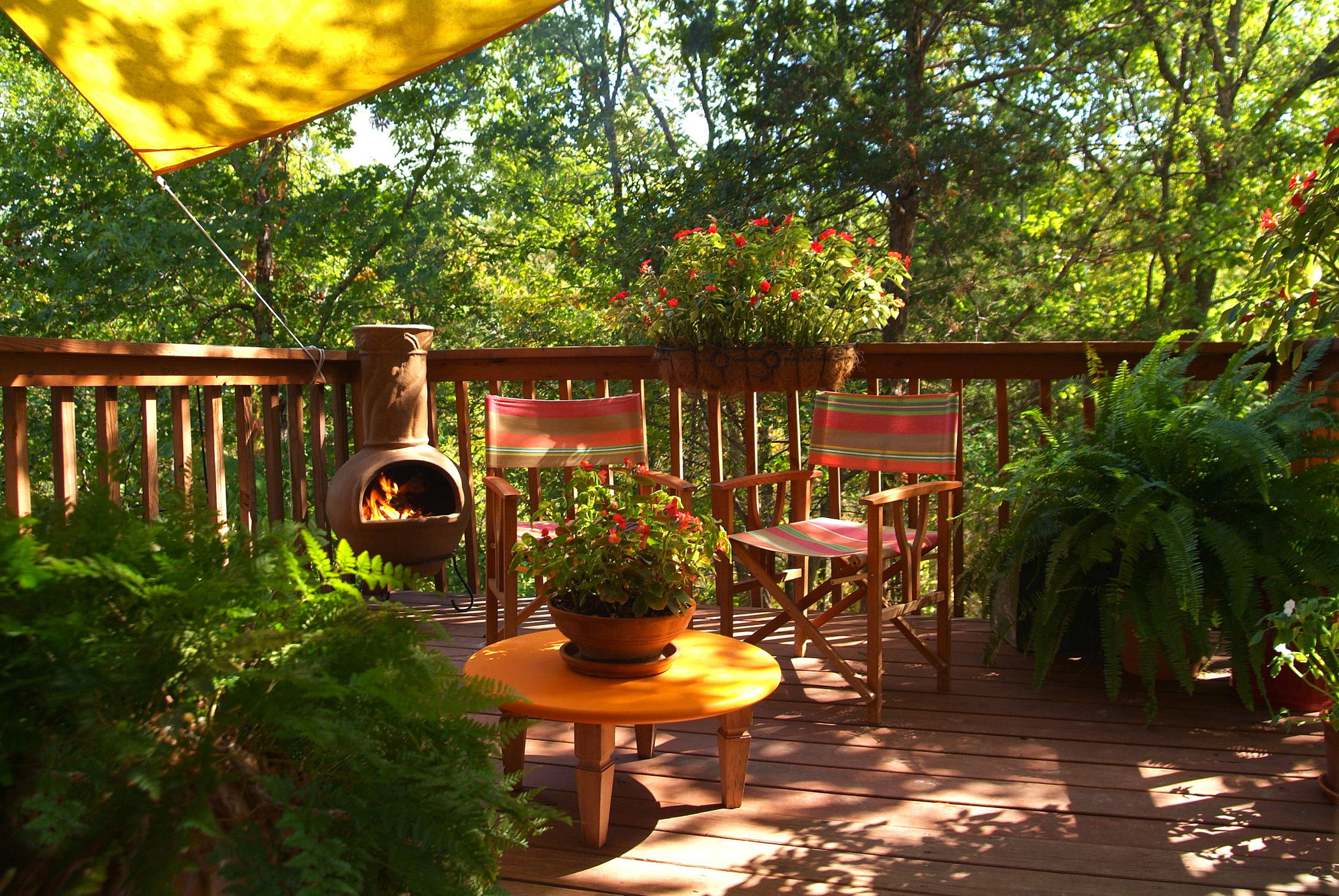 Cabin fever? These chimineas will extend the life of your patio
Cabin fever? These chimineas will extend the life of your patioThis cold-weather season, cozy up to our favorite chimineas!
By Brittany Romano
-
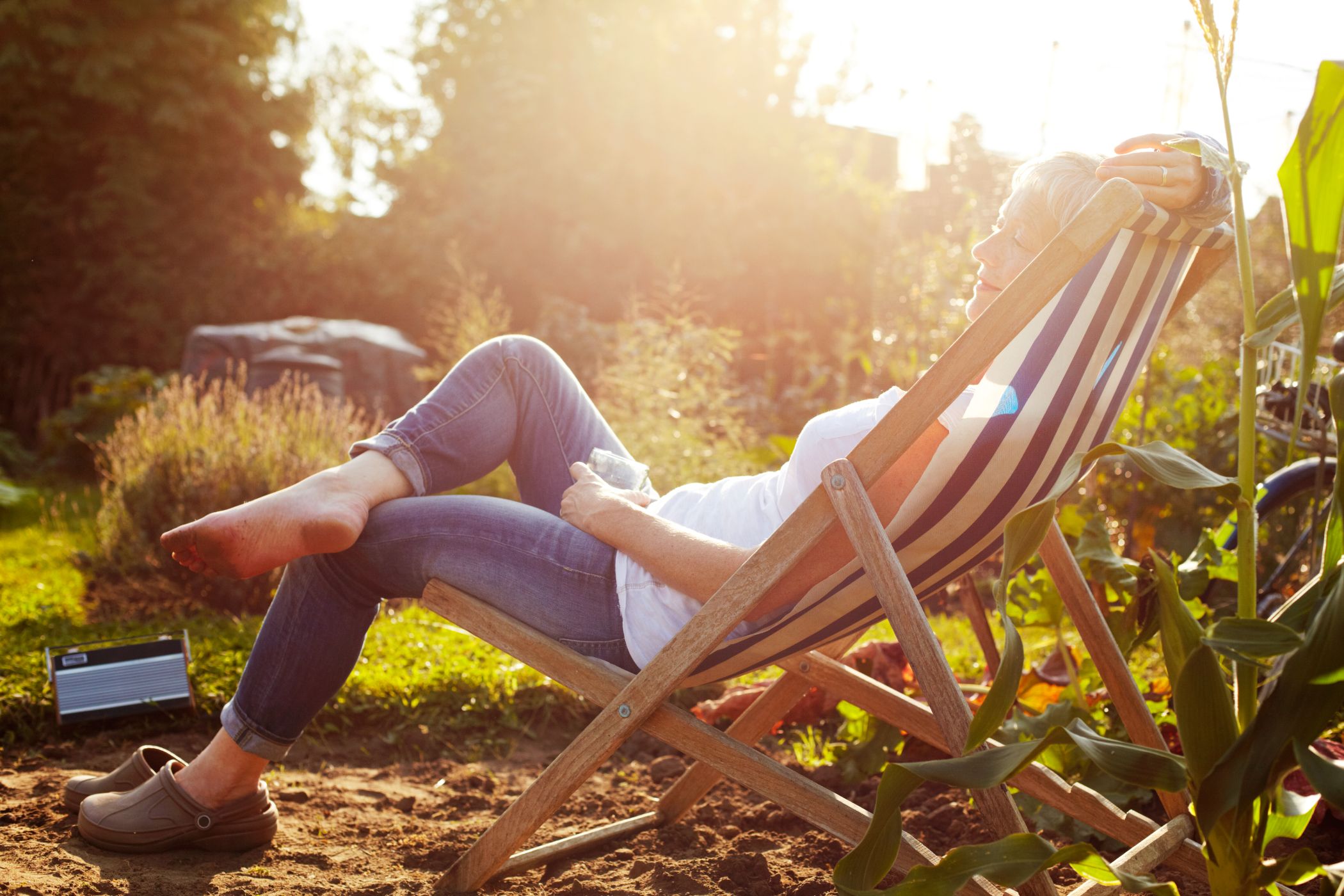 5 outdoor summer essentials to prove Society6 is your one-stop-shop this season
5 outdoor summer essentials to prove Society6 is your one-stop-shop this seasonCheck off all of your outdoor summer essentials by shopping exclusively at Society6.
By Brittany Romano
-
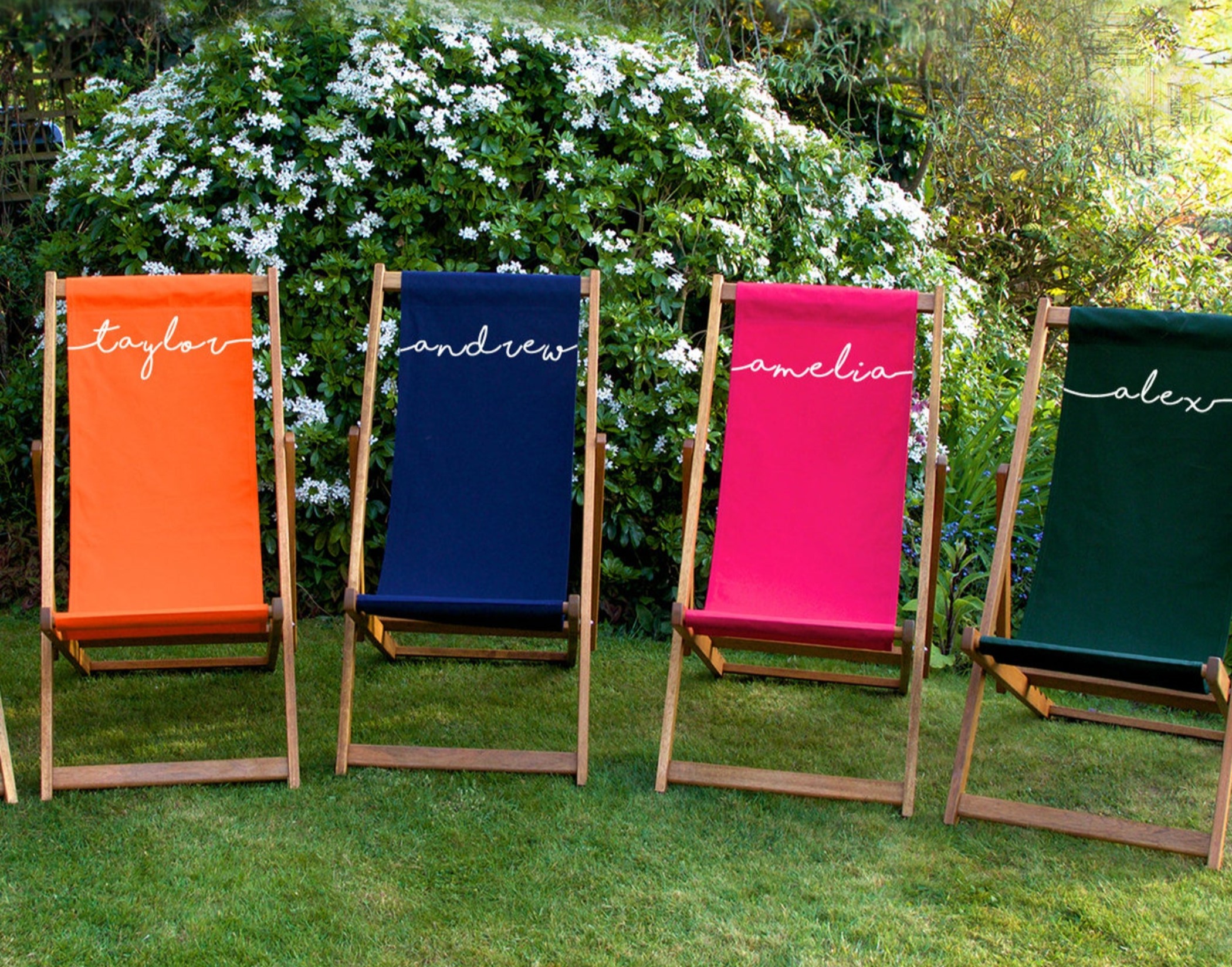 The first-ever Etsy outdoor sale is happening now, and we're buying these 5 items
The first-ever Etsy outdoor sale is happening now, and we're buying these 5 itemsFor a limited time, this Etsy outdoor sale will give your backyard the facelift it needs — at a fraction of the cost.
By Brittany Romano
-
 The benefits of houseplants – 8 feel-good ways plants help your health
The benefits of houseplants – 8 feel-good ways plants help your healthEnjoy the many benefits of houseplants. Air-purifying, anxiety-soothing, mood boosting and more positive vibes.
By Camille Dubuis-Welch